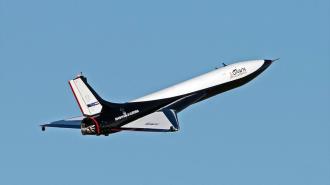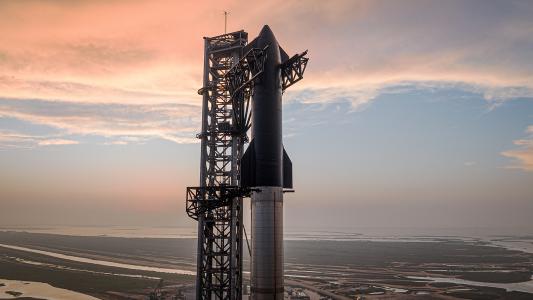New Zealand-based company Dawn Aerospace flew its rocket-powered spaceplane, the Mk-II Aurora, for the first time on March 29 — and then flew it again the next day, and again the day after that.
“These flights were a monumental achievement for Dawn Aerospace, and the result of years of hard work from the team,” said Dawn CEO Stefan Powell. “After conducting three tests in three days, we believe Mk-II is the most rapidly reusable rocket-powered aircraft in operation.”
The challenge: For decades, the only way to reach space was using a rocket designed to burn up in the atmosphere or crash into the ocean at the end of the mission. That meant anyone who wanted to send something into space had to pay the entire cost of building a new rocket.
Dawn’s rocket-powered spaceplane is designed to fly to space twice per day.
Because reusable rockets aren’t sacrificed every time they fly, their makers can charge less per launch and fly more often, making space more accessible than ever before.
Still, the cadence of reusable rocket launches still isn’t exactly rapid. It takes significant time to refurbish the rockets between flights — the fastest turnaround for one of SpaceX’s Falcon 9s was 21 days — and every launch attempt must be individually approved by regulators.
The idea: Dawn is designing its rocket-powered spaceplane to be able to reach space twice per day, and because it takes off and lands horizontally from a runway, Dawn won’t need to clear each flight with regulators.
“We’re certifying this as an aircraft,” Powell told Ars Technica. “So once we get our certification, we’re allowed to fly as frequently as we want, provided we stay within the parameters of that certification.”
“You know, we don’t go to the regulator every time we want to fly,” he continued. “So that’s one massive difference that facilitates rapid reusability.”
“This will be a totally unique capability, so the market is somewhat unknown.”
Stefan Powell
What’s new? Dawn first flew the Mk-II Aurora under the power of jet engines in 2021, but the late-March 2023 flights were the first using rocket engines. Their purpose was to confirm that the vehicle could operate like an aircraft even with its more powerful propulsion system.
During the recent flights, the 15-foot-long spaceplane reached altitudes of approximately 6,000 feet and speeds of 195 miles per hour. Dawn plans to go higher on future flights, reaching an altitude of 62 miles — where space begins — before the end of this year.
Looking ahead: If everything goes according to plan, Dawn will be able to use the rocket-powered spaceplane to carry payloads weighing up to 11 pounds to the boundary of space for customers, with the option of taking off from hundreds of airports across the globe.
“We anticipate many applications in Earth observation, atmospheric research, climate monitoring, communications, microgravity research, and many more,” said Powell. “This will be a totally unique capability, so the market is somewhat unknown.”
After getting the Mk-II commercial service off the ground, Dawn plans to turn its attention to developing Mk-III, a more powerful spaceplane that will launch an expendable rocket carrying heavier payloads to low-Earth orbit.
“The Mk-II demonstrates the technology,” Powell told Space News. “We’ll size the payload of the Mk-III to make sense for the market.”
We’d love to hear from you! If you have a comment about this article or if you have a tip for a future Freethink story, please email us at tips@freethink.com.






